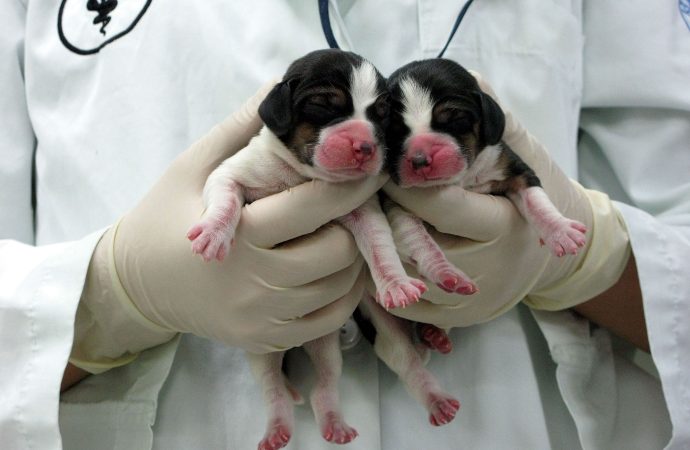Introduction Cloning, a concept that has intrigued and perplexed minds for decades, often elicits a myriad of misconceptions. In this comprehensive exploration, we embark on a journey to unravel the truth behind common cloning myths, shedding light on the intricacies that distinguish reality from fiction. Myth #1: Instant Clones – A Swift Solution to Homework?
Introduction
Cloning, a concept that has intrigued and perplexed minds for decades, often elicits a myriad of misconceptions. In this comprehensive exploration, we embark on a journey to unravel the truth behind common cloning myths, shedding light on the intricacies that distinguish reality from fiction.
Myth #1: Instant Clones – A Swift Solution to Homework?
The popular notion of instant clones, emerging at the same age as their originals, remains a persistent myth. To dispel this misconception, it’s crucial to understand the fundamental process of cloning. Unlike the magical transformations depicted in media, cloning involves creating an embryo, not a fully grown individual.
Upon grasping this, the impracticality of using a clone to expedite homework becomes evident. Cloning doesn’t circumvent the natural process of growth and development. The embryo, once created, requires a surrogate mother and ample time to evolve into a fully developed individual. This myth highlights the importance of clarifying the basic principles of cloning to dispel unrealistic expectations.
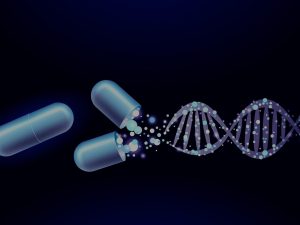
Image by: yendex.com
Myth #2: Carbon Copies – Pet Cloning and Nature vs. Nurture
The desire to clone a beloved pet, seeking a carbon copy for companionship, often clashes with the intricate interplay of genetics and environmental factors. While biotechnology companies offer pet cloning services, the reality is far from having an identical duplicate of a cherished animal.
The phrase “nature versus nurture” holds significant relevance in understanding this myth. Genes may play a role in determining traits, but environmental influences shape physical appearances and personalities. This is exemplified in the case of identical twins, genetically the same but exhibiting unique characteristics.
Applying this concept to pet cloning, even if the cloned pet (let’s call her Frankie #2) shares identical genes with the original, she will experience a different environment, have a different mother, and undergo distinct life experiences. The chance of Frankie #2 resembling the original Frankie closely is slim due to the dynamic interplay of genetics and environmental influences.
Additionally, the role of mitochondria introduces another layer of complexity. Unlike the original donor, a clone inherits mitochondria from the egg cell donor during nuclear transfer. This genetic difference adds to the uniqueness of the clone, debunking the myth of absolute similarity between a clone and its donor.
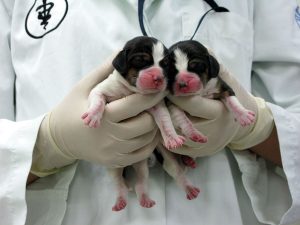
Image by: education.nationalgeographic.org
Myth #3: Cloning is always an artificial process
Contrary to the belief that cloning exclusively occurs in laboratories through artificial means, natural cloning is a widespread phenomenon in the biological world. Asexual reproduction, a natural cloning process, is observed in various organisms.
Bacteria, yeast, and single-celled protozoa multiply by making copies of their DNA and dividing. Remarkably, even in the animal kingdom, certain organisms naturally produce clones. Female aphids’ eggs develop into genetic copies without fertilization, and starfish regenerate into complete, genetically identical individuals when divided.
Recognizing the prevalence of natural cloning dispels the misconception that cloning is solely an artificial, man-made process. The diversity of cloning methods across different species emphasizes the natural occurrence of genetic replication in various forms.
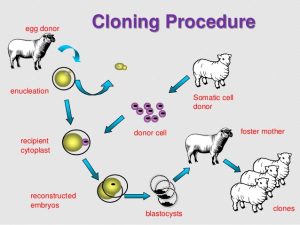
Image by: yendex.com
Myth #4: Cloning is a new technology
The history of cloning extends far beyond the contemporary fascination with biotechnology. Humans have been cloning plants for thousands of years, with fruits like bananas, grapes, and apples originating from artificially created clones. In the realm of botany, cloning a plant can be as straightforward as cutting a branch and grafting it onto another tree.
The practice of animal cloning also boasts a long history. Over a century ago, artificial embryo twinning, involving the division of an early embryo to form genetically identical organisms, was successfully conducted in vertebrates. The first triumph in nuclear transfer, a pivotal aspect of cloning, occurred in a frog during the 1970s.
Understanding the historical roots of cloning challenges the perception that it is a novel technological endeavor. The ancient applications of cloning, particularly in agriculture and botany, reveal the longstanding human quest to manipulate and replicate nature.
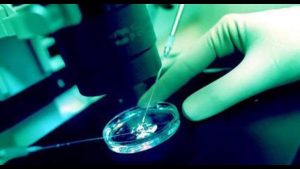
Image by: yendex.com
Myth #5: Cloned animals live short lives and suffer from health problems
The notion that cloned animals universally experience short lives and health issues requires nuanced examination. While animal cloning does face challenges, not all clones succumb to health problems. Several instances highlight the successful and healthy lives of cloned animals.
One striking example involves a racing mule clone that achieved a remarkable ranking of third in the world. Similarly, a barrel-racing horse clone not only entered the world in good health but also garnered a stud fee of $4,000 for its owners at just two years old.
The high failure rate in animal is often attributed to incomplete resetting of the somatic cell’s DNA during the process. As embryos develop, DNA undergoes a resetting process to assume a baseline or embryonic state. Incomplete resetting may result in challenges, but it doesn’t necessarily render clones inherently damaged.
Understanding the intricacies of DNA resetting and its implications on clone health contributes to a more nuanced perspective on the challenges faced by cloned animals. While some encounter difficulties, many clones lead fulfilling, healthy lives, debunking the myth of universally compromised health in cloned organisms.
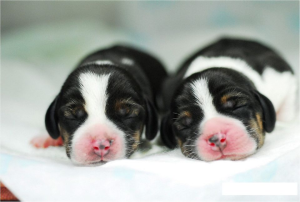
Image by: yendex.com
Conclusion
In our exploration of cloning myths, we’ve uncovered the complexities that defy simplistic narratives. Cloning is not a one-size-fits-all concept; its realities encompass a spectrum of biological intricacies, ethical considerations, Treatment for other health problems and historical dimensions.
Dispelling these myths requires a multifaceted understanding of diverse applications, historical evolution, and the intricate interplay between genes and environment. As science continues to advance, it is imperative to approach with a nuanced perspective, appreciating both its potentials and limitations. The journey to decode myths is an ongoing process, inviting us to question assumptions, embrace uncertainties, and delve deeper into the scientific marvels that define our quest to understand and manipulate life.

